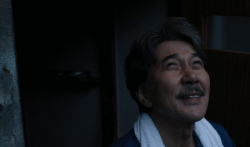

An abstract splatter of colors next to an impressionist portrait sounds like the formula for a disorganized mess of an exhibit. But the latest exhibit at the National Gallery, Focus on the Corcoran: Works on Paper, 1860-1990, proves that the combination might not be as ridiculous as you would expect. The collection is a compilation of a diverse and varied range of works commonly tied together only by the surface on which they were created, paper.
Normally, putting such a variety of works on the same walls would create a loud and flashy incoherence. But despite the ambitious chronological span and wide range of mediums featured in the collection, there is a subtle modesty to the collection as a whole. I say this because it is hard to believe that such a large scope of works are tucked away in the small, two-room gallery space.
The neutral green walls and soft lighting add to the soothing aesthetic of this art series. Despite being surrounded by some of the most iconic artwork of the last two centuries, one cannot help but feel a calm sense of permanence to these drawings, prints, and watercolors. Era upon era of art is represented like a travel through art history: realism turns to impressionism falling slowly into the modern and avant-garde.
The first, slightly larger room of the exhibit houses a series of works created over the course of the 19th century. Upon entering the first phase of the gallery, I was first drawn to a work by John Singer Sargent, “Male Torso with Pole.” Although ornately framed, the work is clearly an unfinished sketch. Quick lines and half finished details capture the central male figure’s muscular physique. The simplicity of this sketch makes it so powerful, for the only focus is on the strength of the human form.
James McNeill Whistler’s “The Church of San Giorgio Maggiore” and a cluster of similar works immediately follow. Stylistically, all three are slightly abstracted to give the viewer a more dream-like perspective. It is interesting to recognize that these works, being separated greatly by time and style, would never be seen together elsewhere. And yet, they fit perfectly in the context of the gallery.
Whilst circling the room, I arrived at two beautiful Winslow Homer
watercolors, “Young Woman Sewing” and “Hudson River Logging.” Knowing Homer’s style, these are fascinating choices because of their larger than life characteristics.
It is refreshing to see Homer’s take on a portrait with an undefined background and a broad-stroked, upbeat watercolor, rather than his usual landscape pieces. “Hudson River Logging” is a surreal combination of washed-out colors that emphasizes feeling over detail.
“Drawing for Ghost Dance” by Robert Stackhouse pulled me into the second room of the gallery. This painting is substantially larger than all the other pieces in the gallery and therefore pulls viewers into the rest of the exhibit. The drawing of a sculpture has beautiful watercolor detail while intentionally left with certain flaws.
The colors seem to fade along the edges and dilute until they have vanished. Its more rustic nature aids the inviting surprise of rounding the corner to find a long-spanning range of modern art.
The rest of the room features, among other works, William H. Johnson’s warm “Street Musicians” and the eerie “#4 Creek” by Arthur Dove. Johnson’s work emphasizes extreme two-dimensionality. Simple figures and basic coloring are intentionally left without depth so that the figures have folk-esque, common charm.
Dove’s piece is something completely different—an abstract charcoal left greatly to the viewers interpretation. The alluring descent from light into dark draws the viewer towards the center of the drawing as if traveling down a creek. Stepping back, one can see less literal imagery similar to that of Georgia O’Keefe. Again, these works can feel incoherent at first glance, yet feature a similar use of light and color, despite their divergent content.
Each piece of the exhibit is excellent in itself, inviting museum goers to spend hours examining the intricacies of each one. But the works are compiled together, their combined effect generates sheer awe.
National Gallery of Art
6th Streeet and Constitutional Avenue
Feb. 7 – May 3
Photo: National Gallery of Art





